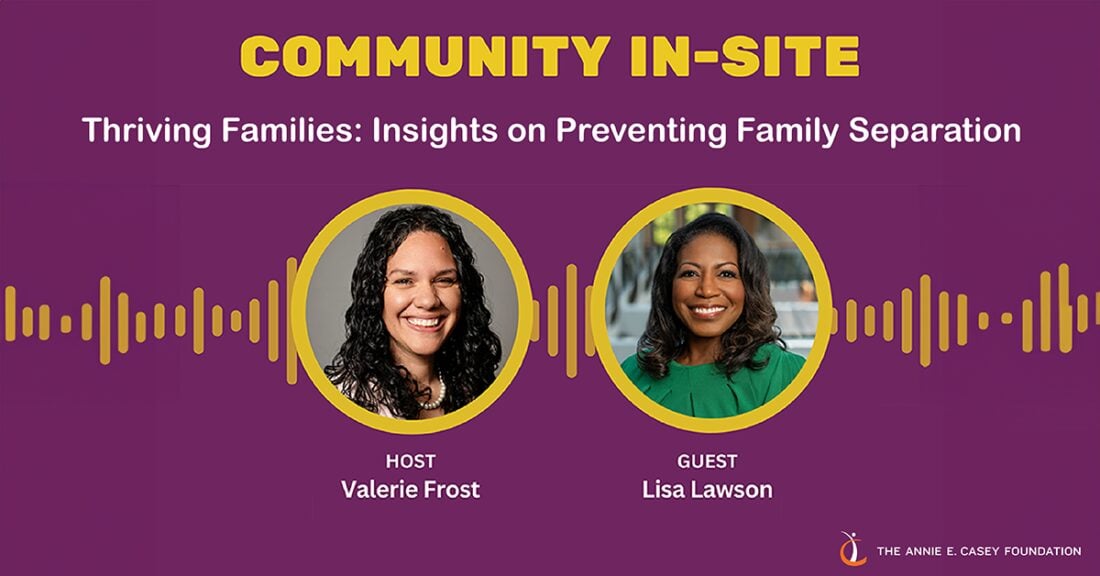Podcast Shares Insights on Preventing Family Separation

For too long, the child welfare system has prioritized reacting to crises over preventing them — often resulting in the unnecessary separation of families. Thriving Families, Safer Children (TFSC), a growing national initiative, offers a promising shift in approach by focusing on strengthening family well-being and keeping children in their homes.
Launched in 2020, TFSC is active in 22 communities across the country. The initiative brings together families with child welfare system experience, community-based nonprofits, public agencies and private partners — including the Annie E. Casey Foundation, Casey Family Programs and Prevent Child Abuse America.
In a recent episode of the Community In-Site podcast, Lisa Lawson, president and CEO of the Casey Foundation, joins host Valerie Frost of Kentucky Youth Advocates, a TFSC site partner, to discuss the initiative’s progress and how it’s reimagining child welfare to help families thrive.
Listen to “Thriving Families: Insights on Preventing Family Separation”
“We were often intervening in the late stages of a crisis,” said Lawson about the origins of the TFSC initiative. Instead, she wondered, “Why don’t we go upstream when it would be much less traumatic, much less expensive, much healthier to support families on the front end of the situation?”
TFSC partner sites are working to address the root causes of child welfare involvement, such as housing instability, limited economic opportunity and inadequate safety net services by assessing community needs and connecting families to supportive services. In many communities, families lack a clear point of access for support or services before they become involved with the child welfare system. This can add confusion to an already stressful time. To address this, 17 TFSC sites are developing family resource centers — low-cost or free community-based hubs for youth and parent resources — and launching new programs with services designed to keep families stable and out of crisis.
When speaking about the next steps for TFSC, Lawson said she’s focused on sharing more stories about the difference the initiative is making for families and communities and recruiting additional partners.
“Countless families can tell you [the] difference this makes in their lives,” said Lawson. “But I think for policy to shift, we’ve got to quantify in better ways what it really means, what it saves, what the well-being measures are that help us tell the story in evermore powerful ways. Ultimately, it benefits absolutely all of us in this country to make sure kids and families are thriving.”





